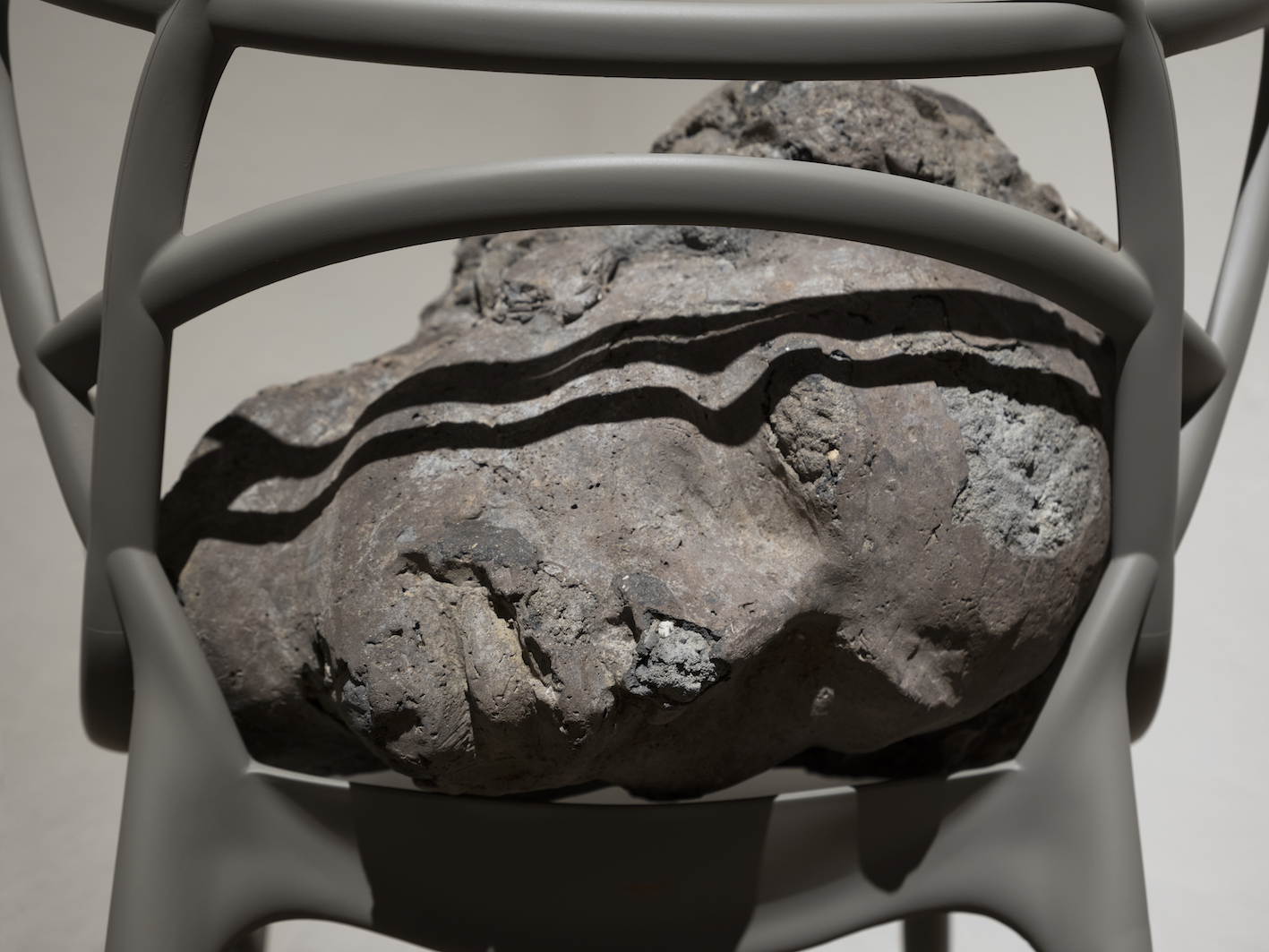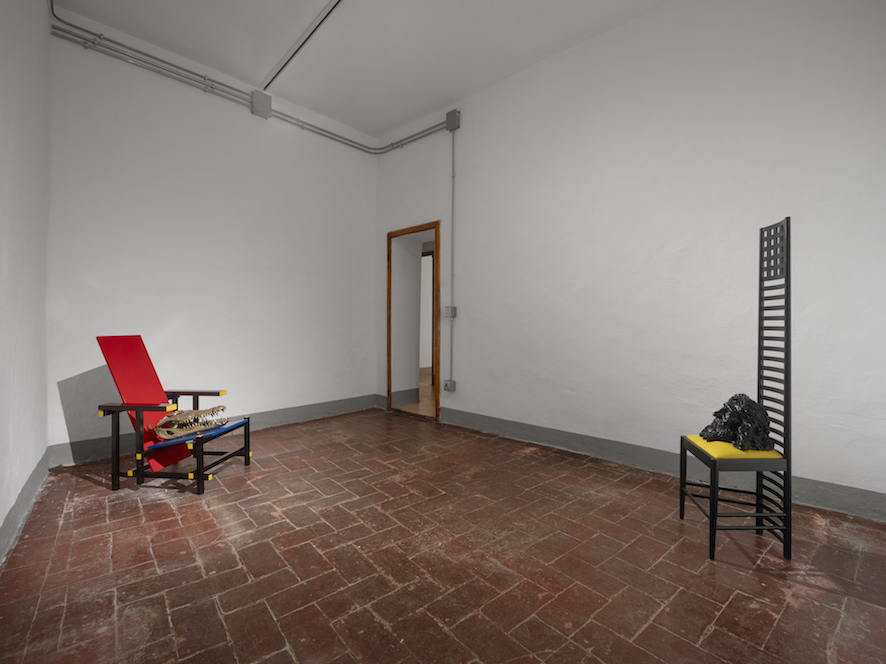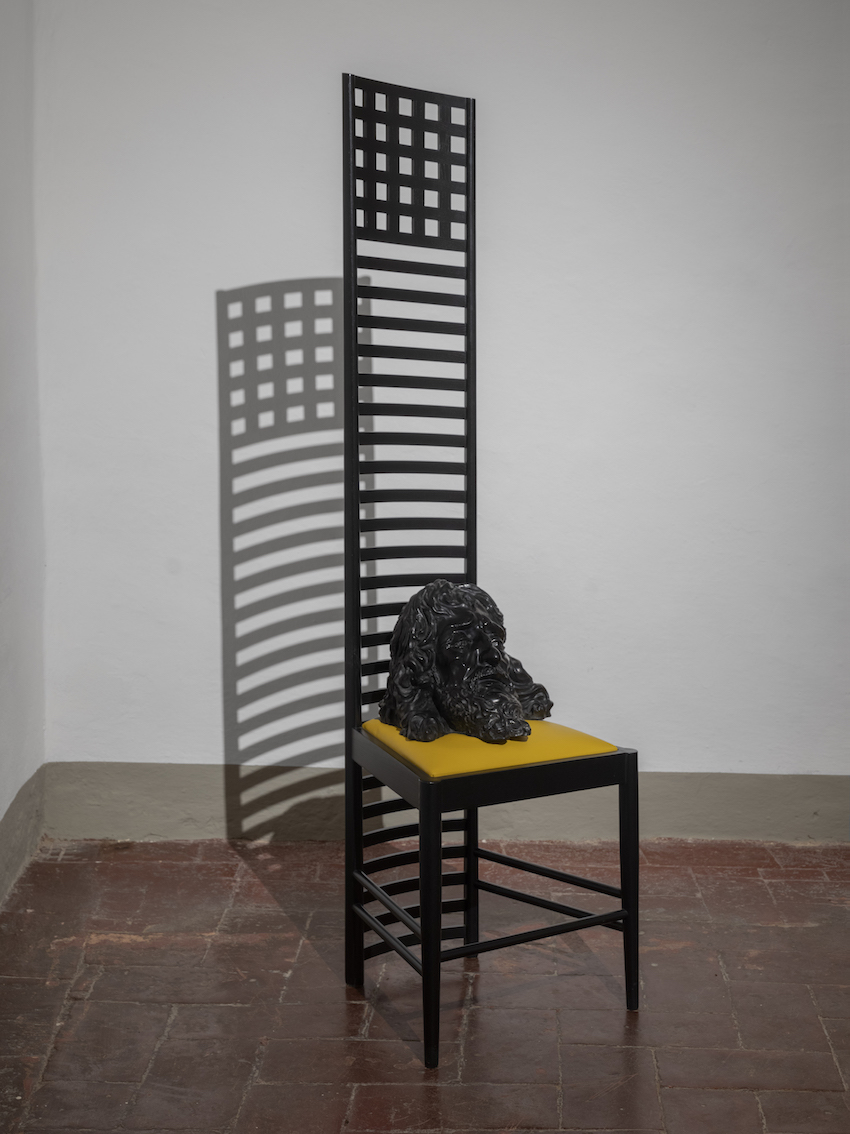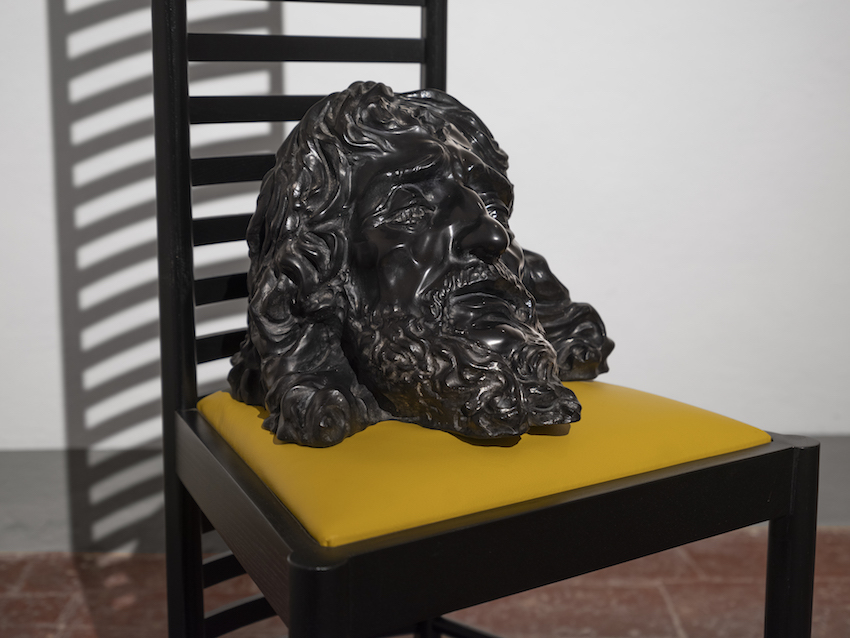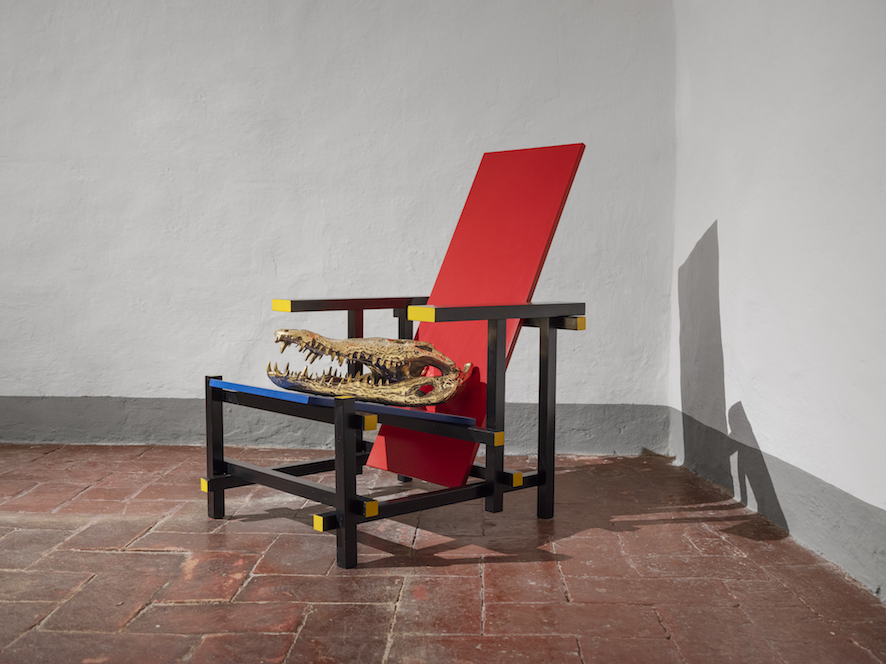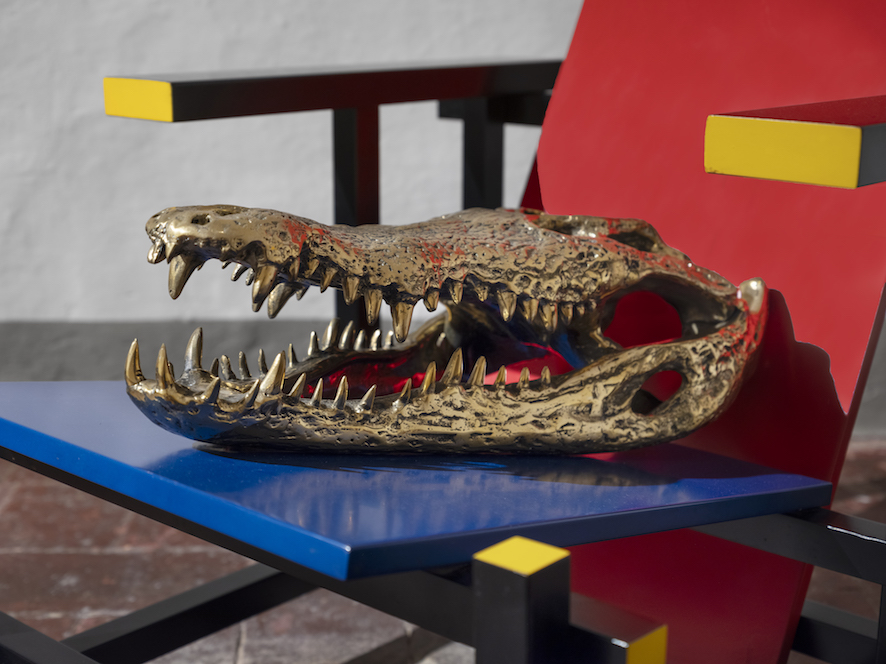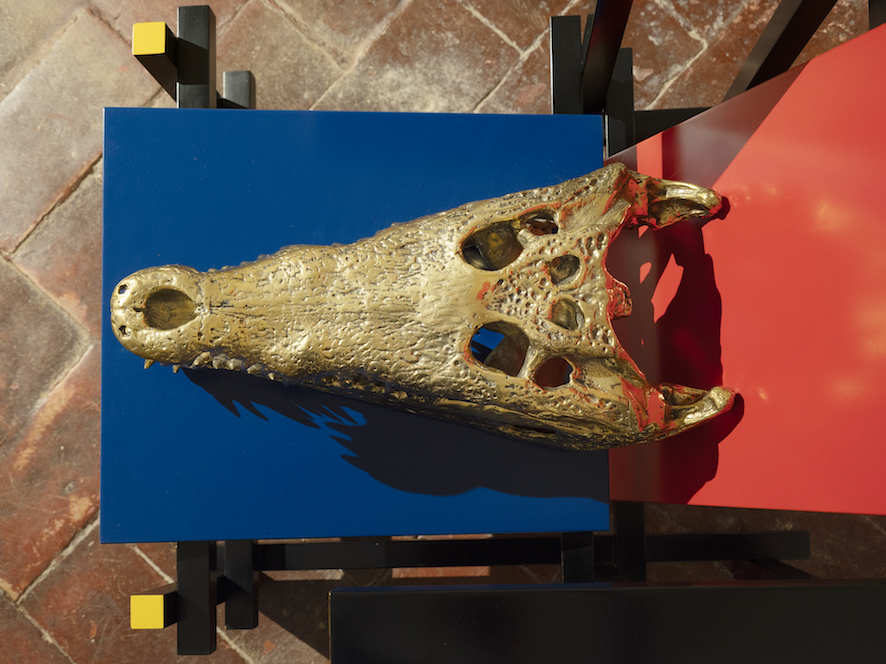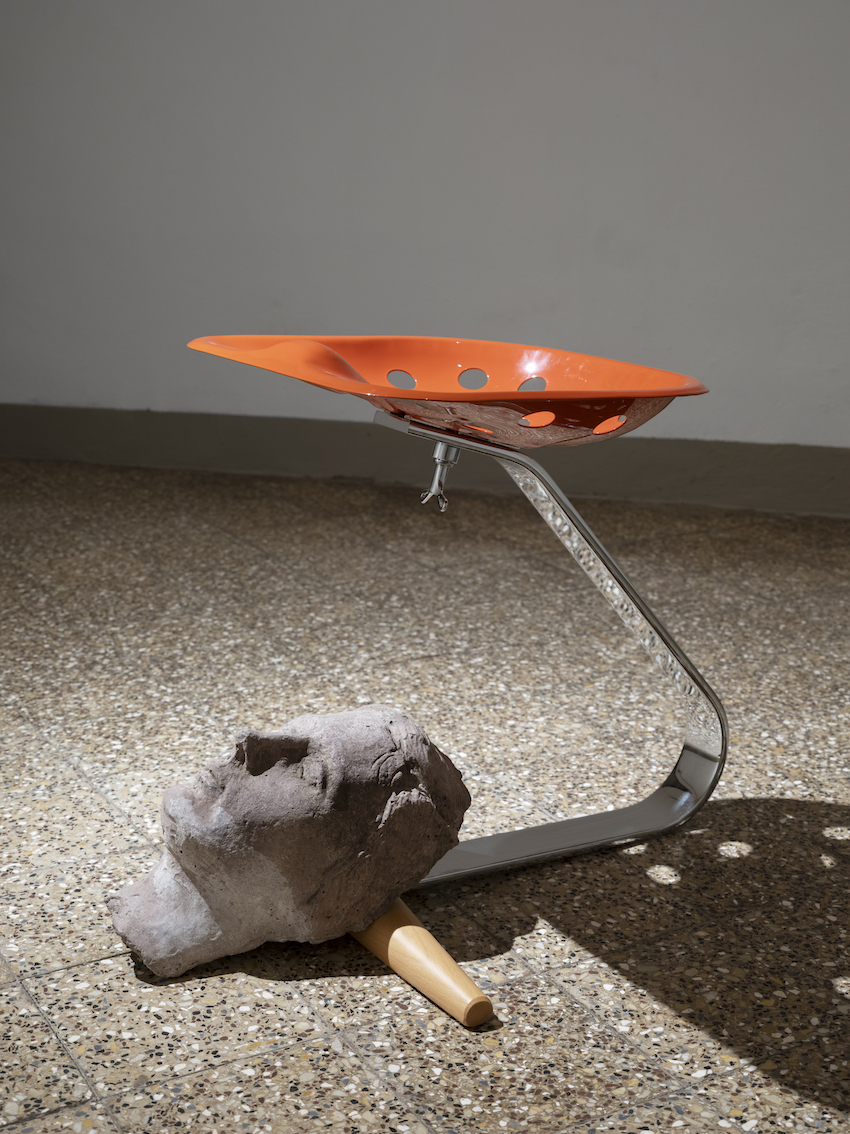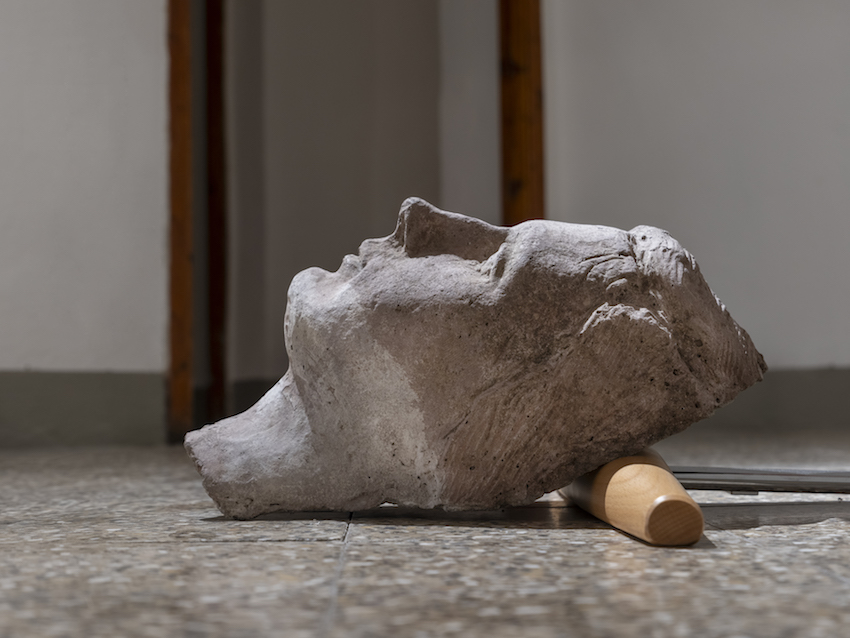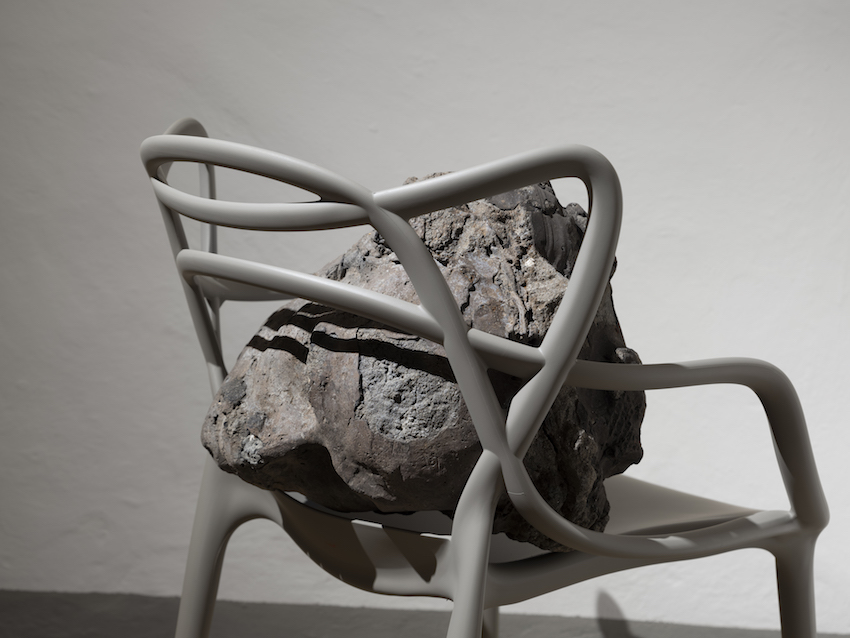MY FAVORIT DESIGNER
IL SEME DELL’UOMO
ieedificio57, San Gimignano, 2024
Taking inspiration from the theories of Austrian theologian Ivan Illich, and following through his work since the 1990s, Michelangelo Consani continues to expand his reflections on the relationship between production and degrowth, and the dominant political system and the marginal people. For this brand-new project, he presents a series of works that share the common title, The Seed of Man, making a direct reference to Marco Ferreri’s 1969 film that reflects on the looming apocalypse. Occupying two corridors and three rooms on the main floor of ieedificio57, Consani stages a project that manifests as a small museum of humanity and takes us on a journey of culture, history and the language of design.
The exhibition opens with “a constellation”: a group of graphite drawings depicting primates. Consani captures their looks, expressions and gestures possibly in an effort to remind us that mankind shares part of its evolutionary process with apes. Or perhaps, to make us retrace the message that director Stanley Kubrick expressed with his epic film 2001: A Space Odyssey.
In the first room, Consani presents two fundamental chairs from the history of design which, as in a Duchampian game, become the basis for his sculptures; two heads, one made of bronze, the other of Belgian black marble (Noir Belge). The first chair is Hill Hause 1. Designed by Charles Rennie Mackintosh and built in 1902, the chair is still considered an authentic treatise on spatial articulation. Inspired by Japanese arts, the Scottish architect established connections between full and empty; a subject that is also frequently revisited by Consani. The second chair is Red & Blue designed by Gerrit Thomas Rietveld in 1917. Red & Blue is not just an armchair but represents one of the greatest masterpieces of the Dutch De Stijl movement of which Rietveld was part.
In the next room we meet two other chairs, The Masters Chair and Mezzadro which in Consani’s practice once again become “pedestals” for two sculptures. Designed by Philippe Starck & Eugeni Quitllet, the former is a tribute to three of the most iconic chairs of all time: Arne Jacobsen’s Series 7 Chair, Eero Saarinen’s Tulip Chair and Charles Eames’s Eiffel Chair. The profiles of the backrests of these three chairs are overlapped and intertwined to create a hybrid with the intention that The Masters Chair may one day also hold an emblematic place in the field of design. A sizeable concrete head rests on the chair. When Achille and Pier Giacomo Castiglioni designed Mezzadro in 1970, they thought of an object that could be made with readily available components used in the agriculture industry. In fact, Mezzadro consists of three parts – all of which are tractor components: an iron seat, a crossbow and a crossbar. Another example in which, for the artist, the seat serves as the basis for a sculpture: a woman’s face in intimate exchange with the work positioned across the room.
The exhibition culminates with a wooden crate normally used for the transport of goods accommodating a terracotta bust of the Japanese agronomist Masanobu Fukuoka. The room is lit up by a video projection of a cicada that disperses energy. A simple and spontaneous act of love during which the insect, unlike in the rat race created by humanity, is not conditioned by the harassing demands of production.
